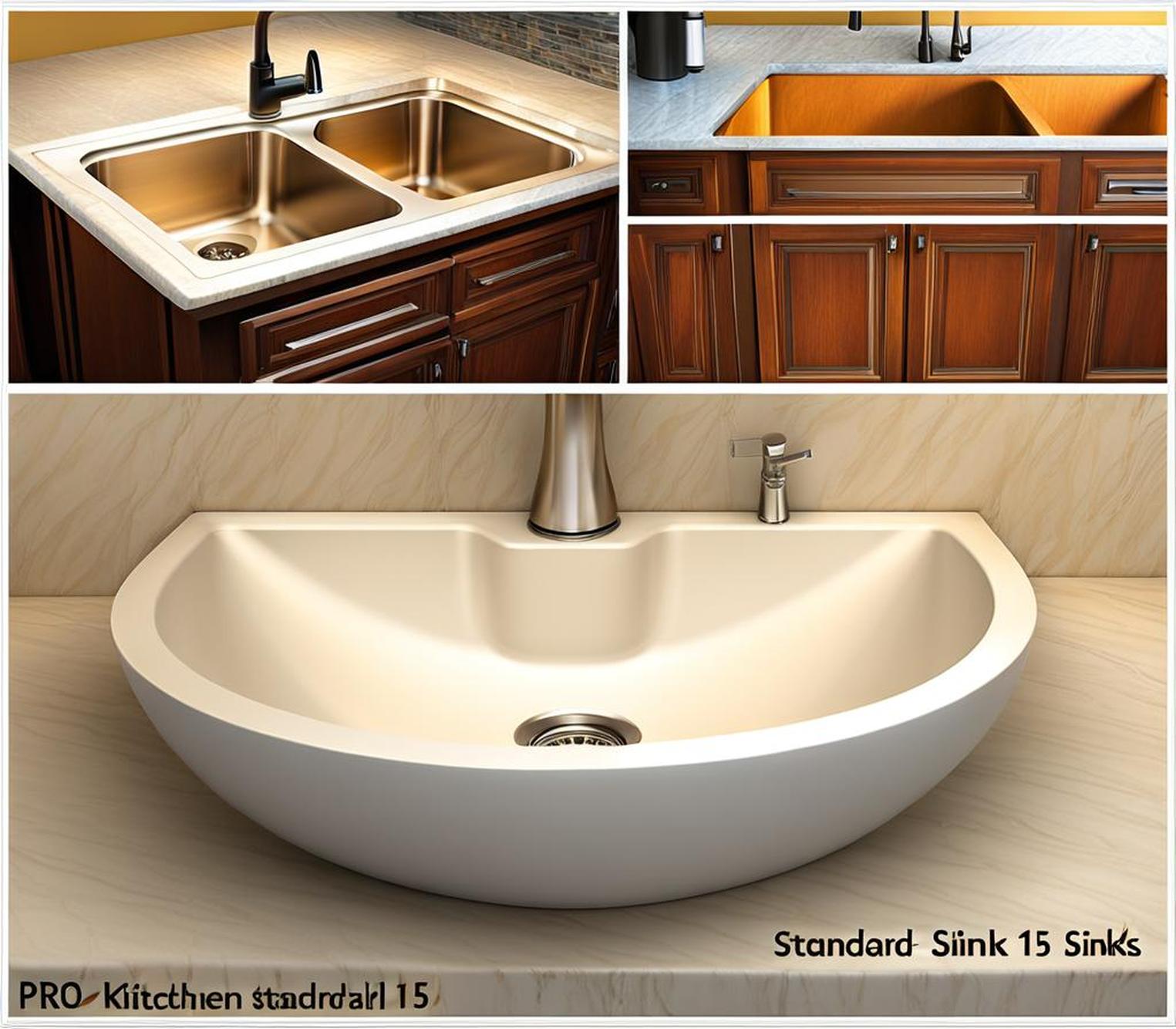For decades, standard kitchen sink sizes of 22 by 30 inches or 22 by 33 inches prevailed. Nearly every home came equipped with one of these two options, making sink selection simple. However, today there is far more variety when it comes to kitchen sink dimensions. With customization, different materials, and specialty sinks now available, those once ubiquitous standard sizes no longer apply.
So how do you determine the right sized sink for your kitchen? Careful measurement of your existing space is the first critical step. While there are general size guidelines for optimal single and double bowl sinks, your specific needs should dictate the dimensions.
Take Precise Measurements of the Area for Your New Sink
It may sound obvious, but carefully measuring the length, width and depth of the available space is imperative. Make sure to use a tape measure and record the most accurate dimensions possible. Account for any surrounding backsplash or countertop overhangs that may impact the sink size.
Also consider existing plumbing and drainage setups that you may intend to use. The location of plumbing fixtures and drains may limit sink size and configuration options. Having these measurements on hand will make shopping for a properly sized sink much easier.
Familiarize Yourself with Common Sink Dimension Guidelines
While less standardized today, there are some general size norms that can provide a helpful starting point.

For a single bowl sink, an optimal size range is often:
- Length: 70-77 cm (27-30 inches)
- Width: 48-55 cm (19-22 inches)
- Bowl depth: 18-20 cm (7-8 inches)
A double bowl sink is typically larger overall:
- Length: 80-120 cm (31-47 inches)
- Width: 48 cm (19 inches)
- Bowl depths around 18 cm (7 inches)
Larger specialty sinks like farmhouse or utility sinks can range even wider in size, with extra deep and wide basins. But these are less common in standard kitchen settings.
Compare Regional Size Differences
While sink sizes tend to be fairly consistent globally, there are some regional nuances worth noting.
In North America, the most popular sink sizes are:
- Single bowl: 18-22 inches wide
- Double bowl: 33-36 inches wide
In Australia, standard sink sizes are similar but may range in width from 450mm to 600mm for single bowls and 800mm to 1000mm for doubles.
Consider Key Factors in Choosing the Right Sink Size
The usage needs of your kitchen and the available space should dictate your ideal sink size.
If you cook frequently or wash large pots and pans, consider a sink with a deeper and wider basin for easier maneuvering. For a kids’ bathroom, a smaller sink may suffice.
Make sure to account for prep and drying area on countertops surrounding the sink. A larger sink can allow for more continuous counter space.
Also decide if you prefer a single or double bowl design. Double bowls allow for multi-tasking like soaking dishes in one side. They also accommodate disposals and dividers.
Adjust Countertops to Fit Your New Sink
Rather than limiting your sink choice to existing countertops, consider custom-cutting your countertop material to precisely fit your desired sink size.
Materials like concrete, stone, quartz, laminate, wood and tile can often be cut to accommodate nearly any sink dimensions.
This does require coordination with countertop installers. An alternative is choosing an integrated sink and countertop as one piece.
Explore Unique Shapes and Specialty Styles
Beyond standard rectangles, sinks today come in a variety of shapes like round, oval, square and more. Apron-front, farmhouse and tile-in sinks also offer deeper basins.
Look for sinks in materials from stainless steel to fireclay, copper, and stone resin for durability and design.
Be sure to get precise sizing specs from manufacturers on these unique sinks to ensure proper fit.
Kitchen sink sizing requires careful planning, precise measurement and coordination between your sink, countertops, plumbing and space. But with some forethought selecting the perfect sized sink for your needs is very achievable.
Follow the steps here to measure your existing kitchen, understand size options and work with professionals to install the sink sized just right for you. Before long, you’ll be enjoying an optimized kitchen work zone with your new custom-fit sink!
